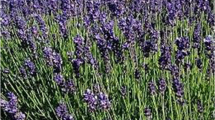Abstract
Eight compounds were isolated from the methanolic extract of the twigs ofCeltis sinensis through repeated silica gel and Sephadex LH-20 column chromatography. Their chemical structures were elucidated as two triterpenoids, germanicol and epifriedelanol, two amide compounds, frans-N-caffeoyltyramine andcis-N-coumaroyltyramine, two lignan glycoside, pinoresinol glycoside and pinoresinol rutinoside, and two steroids by spectroscopic analysis.
Similar content being viewed by others
References
Agrawal, P. K., Carbon-13 NMR spectrum of flavonoids, Elsevier, New York, p. 341, (1989).
Ahmad, V. U. and Rahman, A. U., Handbook of natural products data, vol. 2; Pentacyclic triterpenoids, Elsevier, New York, p. 566–567, (1994).
Batirov, E., Kh., Matkarimov, A. D., Malikov, V. M., and Yagudaev, M. R., Versicoside-a novel lignan glycoside fromHaplophyll versicolor.Khim. Prir. Soedin., 5, 624–628 (1985).
But, Paul P. H. Kimura, T. Guo, J. X., and Sung, C. K.,International collation of traditional and folk medicine: Part 2. World scientific, Singapore, p. 22–23, (1997).
Chiba, M., Okabe, K., Hisada, S., Shima, K., Takemoto, T., and Nishibe, S., Elucidation of the structure of a new lignan glucoside fromOlea europaea by carbon-13 nuclear magnetic resonance spectroscopy.Chem. Pharm. Bull., 27, 2868–2873 (1979).
Cho, J. Y., Kim, A. R., and Park, M. H., Lignans from the rhizomes ofCoptis japonica differentially act as antiinflammatory principles.Planta Med., 67, 312–316 (2001).
Do, J. C., Son, K. H., and Kang, S. S., Studies on the constituents of the roots ofRubus parvifolius (I). Isolation of (-)- epicatechin.Kor. J. Pharmacogn., 19, 170–173 (1988).
Gonzalez, A. G., Mendoza, J. J., Ravelo, A. G., Luis J. G., and Dominguez, X. A., A18 oleanane triterpene fromSchaefferia cuneifolia.J. Nat. Prod., 52, 567–570 (1989).
Han, S. H., Lee, H. H., Lee, I. S., Moon Y. M., and Woo, E. R., A new phenolic amide fromLycium chinense Miller.Arch. Pharm. Res., 25, 433–437 (2002).
Hong, N. D., Rho, Y. S., Kim, N. J., and Kim, J. S., Studies on the constituents of Ulmi Cortex.Kor. J. Pharmacogn., 21 (3) 201–204 (1990).
Kim, D. K. and Lee, K., Inhibitory effect of trans-N-p-coumaroyl tyramine from the twigs ofCeltis sinensis on the acetylcholinesterase.Arch. Pharm. Res., 26, 735–738 (2003).
Koch, B. P., Harder, J., Lara, R. J., and Kattner, G., The effect of selective microbial degradation on the composition of mangrove derived pentacyclic triterpenols in surface sediments.Organic Geochem., 36, 273–285 (2005).
Kundu, J. K., Rouf, A. S., Hossain, M. N., Hasan, C. M., and Rashid, M. A., Antitumor activity of epifriedelanol fromVitis trifolia.Fitoterapia, 71, 577–579 (2000).
Lajide, L., Escoubas, P., and Mizutani, J., Termite antifeedant activity inXylopia aethiopica.Phytochemistry, 40, 1105–1112 (1995).
Lee, S. J., Yun, Y. S., Lee, I. K., Ryoo, I. J., Yun, B. S., and Yoo, I. D., An antioxidant lignan and other constituents from the root bark ofHibiscus syriacus.Planta Med., 65, 658–660 (1999).
Matsunaga, S., Tanaka, R., Takaoka, Y., In, Y., Ishida, T., Mawardi, R., and Ismail, H. B. M., 26-Nor-D:A-friedooleanane triterpenes fromPhyllanthus Watsonii.Phytochem., 32, 165–170 (1993).
Park, H. J., Lee, M. S., Lee, E., Choi, M. Y., Cha, B. C., Jung, W. T., and Young, H. S., Serum cholesterol lowering effect of triterpene acetate obtained fromLactuca indica.Kor. J. Pharmacogn., 26, 40–46 (1995).
Park, S. W., Yook, C. S., and Lee, H. K., Chemical components from the fruits ofCrataegus pinnatifida var.psilosa. Kor. J. Pharmacogn., 25, 328–335 (1994).
Pérez, C, Almonacid, L. N., Trujillo, J. M., González, A. G., Alonso, S. J., and Navarro, E., Lignans fromApollonias barbujana.Phytochemisty, 40, 1511–1513 (1995).
Tsukamoto, H, Hisada, S., and Nishibe, S., Lignans from bark ofFraxinus mandshurica var.japonica and F. japonica. Chem. Pharm. Bull., 32, 4482–4489 (1984).
Wu, T. S., Ou, L. R, and Teng, C. M., Aristolochic acids, aristolactam alkaloids and amides fromAristolochia kankauensis.Phytochemistry, 36, 1063–1068 (1994).
Author information
Authors and Affiliations
Corresponding author
Rights and permissions
About this article
Cite this article
Kim, D.K., Lim, J.P., Kim, J.W. et al. Antitumor and antiinflammatory constituents fromceltis sinensis . Arch Pharm Res 28, 39–43 (2005). https://doi.org/10.1007/BF02975133
Received:
Issue Date:
DOI: https://doi.org/10.1007/BF02975133




